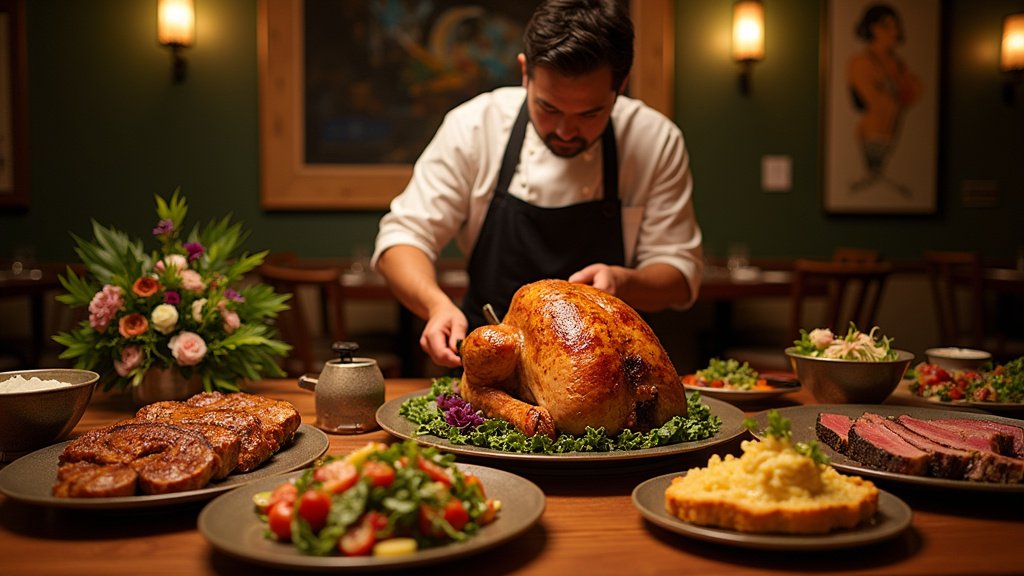In the heart of Texas, a culinary tradition thrives, blending the rich heritage of Mexican cuisine with the bold flavors of the Lone Star State. Tex-Mex, a term that encapsulates this fusion, has become synonymous with hearty dishes, vibrant spices, and a dining experience that reflects the cultural tapestry of Texas. As a food critic and avid foodie, I invite you to embark on a journey through the origins, evolution, and quintessential elements of Tex-Mex cuisine, highlighting the must-try dishes and establishments that define this beloved culinary genre.
The Origins of Tex-Mex Cuisine
Tex-Mex cuisine emerged from the confluence of Mexican culinary traditions and Texan influences. The term “Tex-Mex” was initially an abbreviation for the Texas Mexican Railway, but it later came to describe the unique culinary style that developed in Texas. This cuisine is characterized by the incorporation of ingredients such as beef, cheese, and wheat flour, which were less common in traditional Mexican cooking.
Key Ingredients and Dishes
Tex-Mex cuisine is renowned for its hearty and flavorful dishes. Staples include chili con carne, enchiladas, and fajitas, often accompanied by sides like refried beans and Spanish rice. The liberal use of cheese, cumin, and chili powder distinguishes Tex-Mex from its Mexican counterparts.
Iconic Tex-Mex Establishments in Texas
Texas boasts numerous establishments that have become synonymous with authentic Tex-Mex dining. In San Antonio, Mi Tierra Café y Panadería offers a 24/7 dining experience with a menu rich in Tex-Mex classics. Austin’s Matt’s El Rancho, established in 1952, is famed for its Bob Armstrong Dip, a decadent combination of queso, taco meat, and guacamole. In Dallas, Avila’s has been serving traditional Tex-Mex dishes since 1986, with recipes rooted in the Avila family’s heritage.
The Evolution and Global Influence of Tex-Mex
Over the years, Tex-Mex cuisine has transcended regional boundaries, influencing culinary scenes across the United States and beyond. Its adaptability and bold flavors have led to the creation of numerous Tex-Mex-inspired dishes worldwide.
Conclusion
Tex-Mex cuisine stands as a testament to the rich cultural interplay between Texas and Mexico. Its enduring popularity is a tribute to the flavors and traditions that continue to captivate palates across the globe.
FAQs
What distinguishes Tex-Mex from traditional Mexican cuisine?
Tex-Mex cuisine incorporates ingredients like beef, cheese, and wheat flour, which are less prevalent in traditional Mexican cooking. Additionally, Tex-Mex dishes often feature a heavier use of cumin and chili powder.
Where did the term “Tex-Mex” originate?
The term “Tex-Mex” was originally an abbreviation for the Texas Mexican Railway. It later came to describe the unique fusion cuisine that developed in Texas.
What are some must-try Tex-Mex dishes?
Iconic Tex-Mex dishes include chili con carne, enchiladas, fajitas, and nachos. These dishes often feature generous amounts of cheese and are accompanied by sides like refried beans and Spanish rice.
Are there any notable Tex-Mex restaurants in Texas?
Yes, Texas is home to numerous renowned Tex-Mex establishments. Mi Tierra Café y Panadería in San Antonio, Matt’s El Rancho in Austin, and Avila’s in Dallas are among the notable ones.
How has Tex-Mex cuisine influenced global culinary trends?
Tex-Mex cuisine has gained international popularity, influencing various culinary scenes with its bold flavors and adaptable dishes. Many restaurants worldwide offer Tex-Mex-inspired menus, showcasing the cuisine’s global appeal.
Is Tex-Mex cuisine still evolving?
Yes, Tex-Mex cuisine continues to evolve, with chefs experimenting with new ingredients and techniques while honoring traditional flavors. This evolution ensures that Tex-Mex remains a dynamic and integral part of the culinary landscape.






